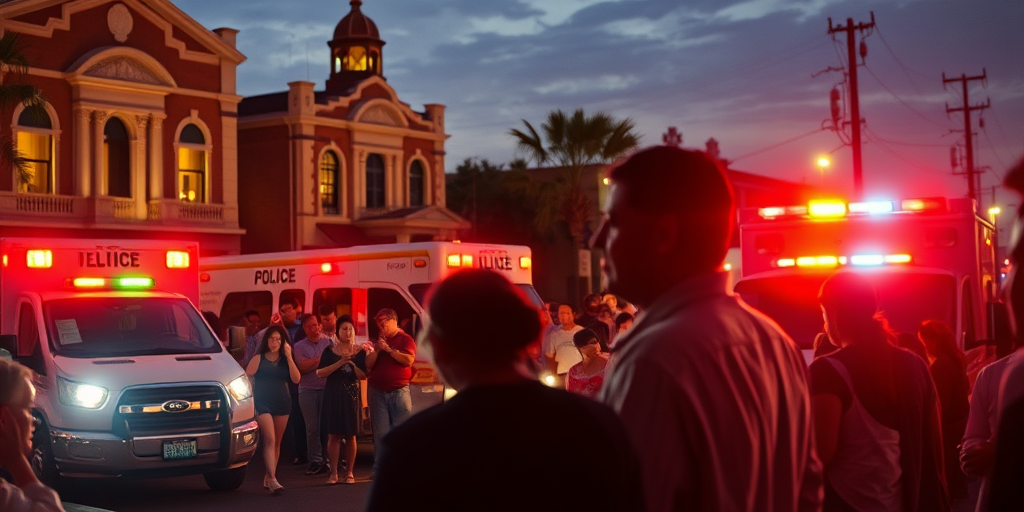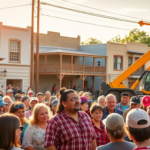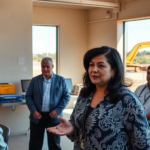Tragic Losses and Legal Charges: South Texas Child Deaths in Hot Cars
Two separate, heart-wrenching incidents in South Texas have left communities in Cameron and Hidalgo counties reeling. In the past weekend, two children tragically succumbed to the extreme heat after being left in hot cars, leading to legal charges against two individuals responsible for their care.
Overview of the Incidents
In a disturbing narrative that repeats far too often, Cameron County authorities have charged Karen Silva, 36, with injury to a child causing death, a second-degree felony. Allegedly, Silva left a 4-year-old child unattended in a daycare van outside The Learning Club Preschool in Brownsville. The Hidalgo County Sheriff’s Office similarly charged Ricardo Mata, 34, after his 3-month-old son was found lifeless inside a car in Mission.
Each incident underlines the critical importance of vigilant care and the integration of preventive measures to protect vulnerable children from heatstroke—a condition rapidly fatal in closed vehicles under the scorching South Texas sun.
The Legal Proceedings and Background
Ricardo Mata remains in custody on a $2 million bond, an additional legal complication as he was previously out on bond for a 2021 murder and attempted murder charge. According to Sheriff’s Office reports, Mata, after drinking, left his 3-month-old son in the car while entering his home to sleep.
Karen Silva, released on a $10,000 bond, faces ongoing investigations concerning the circumstances leading to the 4-year-old’s death. It remains unclear if Silva held an employment position at the daycare, prompting further inquiries by local authorities and media.
Local Community Reactions and the Call for Change
These events have caused a ripple of sadness and concern throughout the Rio Grande Valley, with many community members and leaders calling for immediate action to prevent similar tragedies.
Lt. Enrique Longoria, public information officer for the Hidalgo County Sheriff’s Office, described the situation as preventable, urging parents and caregivers to adopt simple habits and utilize available technology. “It’s heartbreaking. We must better protect our little ones by using technology or even low-tech solutions like leaving a purse in the backseat to ensure we remember our children,” Longoria advised.
The Heat’s Dangerous Impact
Research provided by Safe Kids Worldwide emphasizes the quick escalation of temperatures in a closed car. Even with windows cracked, a vehicle’s interior can rise by 19 degrees in just 10 minutes. This rapid heat increase is particularly dangerous for children, whose bodies are less efficient at regulating temperature compared to adults.
Each year, countless families suffer due to the ambient dangers posed by heat, underscoring the urgent need for caregivers to embrace regular vehicular checks. The sobering reality is that a child succumbs to vehicular heatstroke approximately every nine days in the U.S.
Wider Implications for South Texas
The loss of these young lives has not only spotlighted individual responsibility but also instigated broader discussions around legislative enhancements and public education within the South Texas community. Possible future solutions include mandated installation of heat-detecting sensors in car seats and launching awareness campaigns aimed at reducing such accidents.
Economist Dr. Teresa Galvan from the University of Texas Rio Grande Valley notes the potential societal benefits of integrating smarter safety technologies and training, considering that, “Increasing public awareness and technology adoption could decrease child mortality and hospital visits in areas practically synonymous with extreme heat conditions.”
Resources and Community Support
County officials urge anyone who might accidentally lock a child in a car to treat the situation as an emergency and call 911 immediately. In addition, community health centers throughout the valley offer educational services outlining strategies to avoid vehicular heatstroke.
The tragic events have intertwined with a broader narrative: ensuring that every child in South Texas has the chance to grow up in a safe environment, stepping beyond the immediacy of these tragedies while acknowledging the invaluable role of community vigilance and technological advancement.
Conclusion
As the community grieves the loss of these young lives, the grave incidents serve as a compelling call to action. As South Texas residents unite in solidarity to prevent future tragedies, these cases remain a solemn reminder of the shared duty to protect and cherish the most vulnerable members of society—the children.







